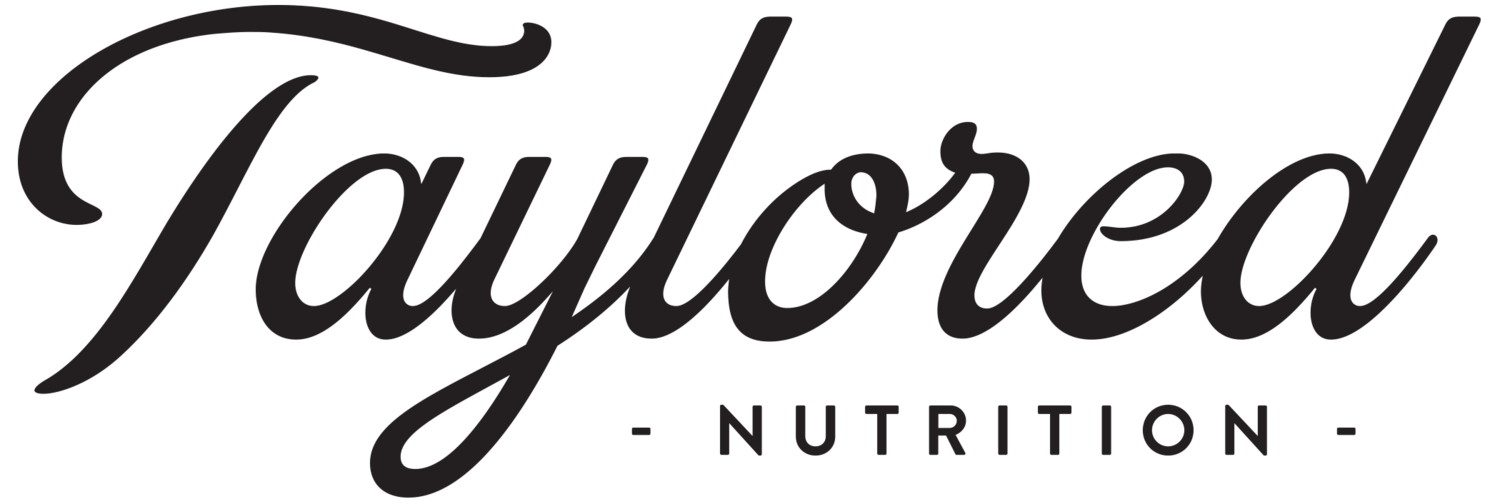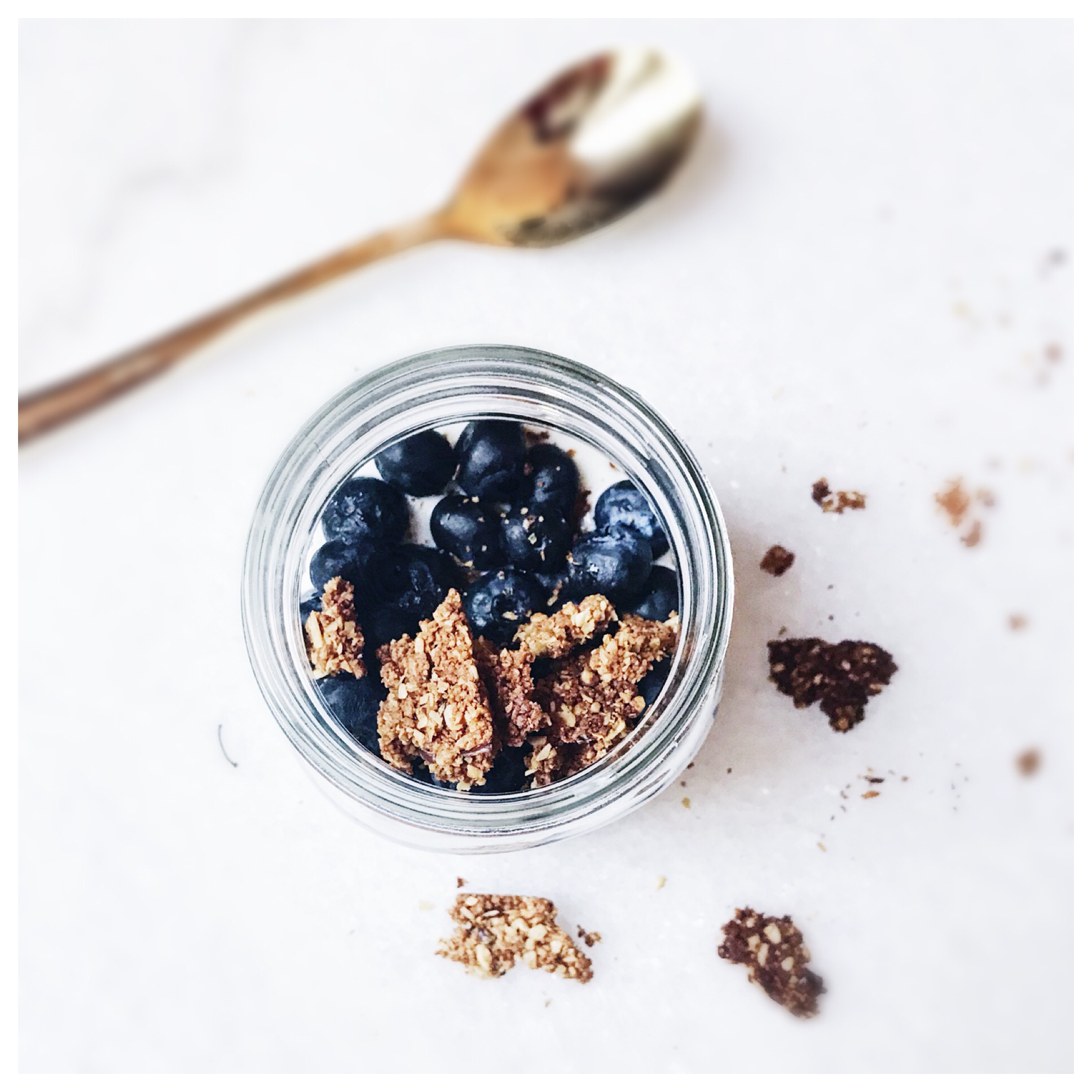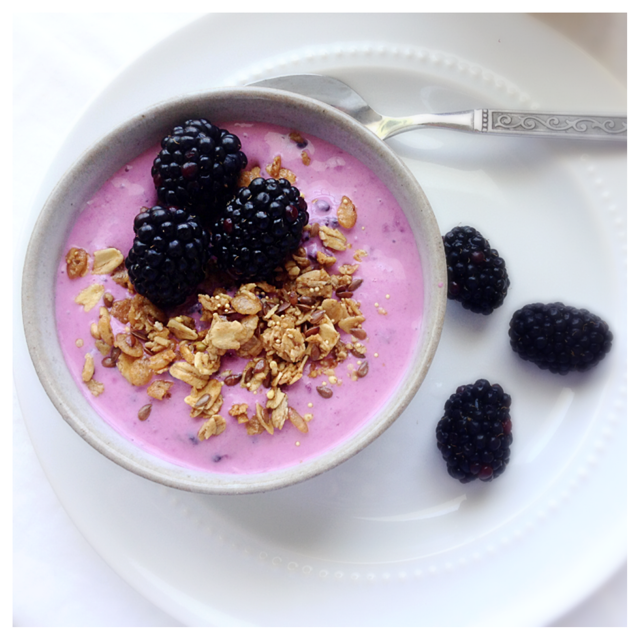I always talk to young elite or multi-sport athletes about the importance of not skipping a meal. Each meal is an opportunity for the young athlete to get needed protein to repair torn muscles, carbohydrate to replenish energy stores, fat for brain health, satiety and inflammation-fighting, and certain nutrients like calcium to keep bones strong. Just as skipping a meal puts the young athlete at a disadvantage, not skipping meals can be one simple way to take your training and performance up a notch. Today I’m talking about calcium and I’m specifically focusing on ways to get calcium in breakfast because, of all the schools and sports teams I visit, the athletes skip breakfast the most often. Keep on reading for some breakfast ideas that will boost your young athlete’s calcium intake. Questions? Comment below!
Happy Fueling!
Taylor
Love simple breakfasts that include filling a small mason jar with my favorite yogurt, fruit and homemade flax & chia seed granola.
Ten Calcium - Boosting Breakfast Ideas
for the Young Athlete
Sun Butter Banana and Chia Seed Oatmeal
This is my newest morning oatmeal go-to recipe. Bump up the calcium by using some almond butter instead of Sun Butter or peanut butter!
Sun butter banana overnight oats
Still love the simplicity of these overnight oats. Again, use almond butter instead of Sun Butter or peanut butter for a little boost in calcium.
Cherry Vanilla Overnight Oats
A non-nut or non-seed butter option, this breakfast is packed with flavor and offers some calcium to busy mornings!
Yogurt & Fruit Parfait with Flax Seeds
No recipe needed here. Just layer your favorite yogurt, fruit and a sprinkle of flaxseed into a glass or bowl. Super simple and full of calcium.
REMEMBER: Greek or higher protein yogurts tend to have less calcium than your regular yogurts. It’s due to how the Greek yogurt is strained / made. So, while your Greek - type yogurts boast more protein, they often have less calcium. If both protein and calcium are a concern, I always say, just mix it up! My favorite yogurts are Siggi’s, Chobani, and this Icelandic brand.
Smoothie made with yogurt or almond milk
Use whatever your favorite smoothie recipe is and try to get about 8 ounces of milk or almond milk or about 4 to 6 ounces of milk and 4 to 6 ounces of yogurt. Throw in chia seeds, flaxseeds or kale for a little more of a boost!
Cheese Toast
Growing up, on Saturday mornings I would often walk into the kitchen to mom eating a piece of toast with cheese on top that she had broiled in the oven. Guess you could call it an open faced grilled cheese if you need a better picture but we just called it what it was - cheese toast. This was typically a breakfast option in our household. Well, one morning last year at a high school, after I had finished a talk to a girls volleyball and soccer team, I was answering questions. I was talking with one young lady about easy breakfast ideas that could get her some protein and calcium quickly. I mentioned this cheese toast and she just looked at me curiously and with so much skepticism in her eyes and said, “like a bad grilled cheese??” . Ha! Touche. All I could do was laugh. Fair point I guess, if you didn’t grow up with it. So, with all that said. Take or leave the cheese toast. But it is an option! You could even dress it up by topping it with a slice of tomato and sprinkle of Italian season before broiled it in the oven.
Mini Wafflewiches
This idea came straight from the Kids in the Kitchen program that I was a part of for three years with the Junior League of Dallas. The kids made these in schools and it was by far one of the favorites in all of the schools. I downsized it a little here to be more compact and portable if you wanted.
4 mini waffles (for 2 mini sandwiches)
vanilla yogurt
nut or seed butter (optional)
sliced banana
Eggs with cheese & sauted kale. dried figs on the side
Easy eggs. You could even add this into egg cups like the ones here to have ahead of time!
Cottage cheese with drizzles of honey & fruit
About 1/2 cup of cottage cheese gives you about 100 mg of calcium!
Almond butter toast and an 8 to 12 ounce glass of milk or almond milk
Go with your favorite toast. If you use almond butter you could get even an extra little boost of calcium! Pair it with milk, or almond milk to maximize your calcium in the meal.






